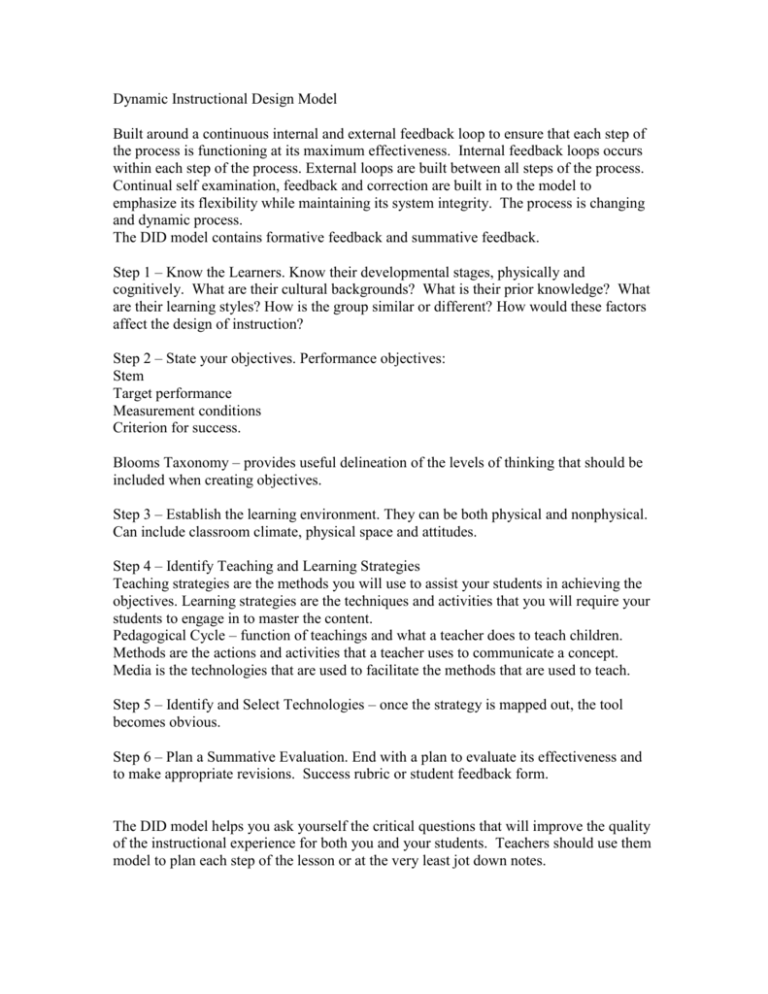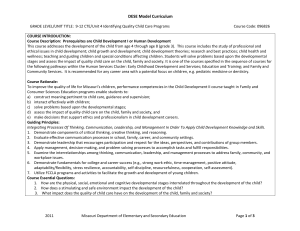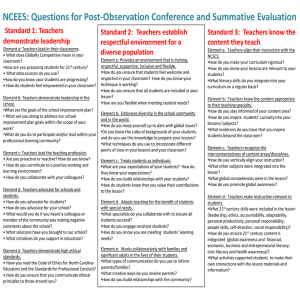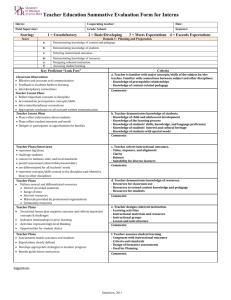Dynamic Instructional Design Model: A Guide
advertisement

Dynamic Instructional Design Model Built around a continuous internal and external feedback loop to ensure that each step of the process is functioning at its maximum effectiveness. Internal feedback loops occurs within each step of the process. External loops are built between all steps of the process. Continual self examination, feedback and correction are built in to the model to emphasize its flexibility while maintaining its system integrity. The process is changing and dynamic process. The DID model contains formative feedback and summative feedback. Step 1 – Know the Learners. Know their developmental stages, physically and cognitively. What are their cultural backgrounds? What is their prior knowledge? What are their learning styles? How is the group similar or different? How would these factors affect the design of instruction? Step 2 – State your objectives. Performance objectives: Stem Target performance Measurement conditions Criterion for success. Blooms Taxonomy – provides useful delineation of the levels of thinking that should be included when creating objectives. Step 3 – Establish the learning environment. They can be both physical and nonphysical. Can include classroom climate, physical space and attitudes. Step 4 – Identify Teaching and Learning Strategies Teaching strategies are the methods you will use to assist your students in achieving the objectives. Learning strategies are the techniques and activities that you will require your students to engage in to master the content. Pedagogical Cycle – function of teachings and what a teacher does to teach children. Methods are the actions and activities that a teacher uses to communicate a concept. Media is the technologies that are used to facilitate the methods that are used to teach. Step 5 – Identify and Select Technologies – once the strategy is mapped out, the tool becomes obvious. Step 6 – Plan a Summative Evaluation. End with a plan to evaluate its effectiveness and to make appropriate revisions. Success rubric or student feedback form. The DID model helps you ask yourself the critical questions that will improve the quality of the instructional experience for both you and your students. Teachers should use them model to plan each step of the lesson or at the very least jot down notes. Each component of the lesson plans emerges from the component of the design model. The lesson plan provides the day to day snapshot of what will happen in the classroom. The DID instructional has a template to help plan lessons called he Instructional Action Plan. It contains the following steps: 1) Identifying learner preparation activities 2) Getting the classroom ready 3) Listing teaching-learning activities 4) Creating person prompts 5) Listing support technologies 6) Listing feedback instruments 7) Detailing follow-up activities











